WOMEN\\\'S RIGHT TO PERFORM YAJNA, WEAR YAJYOPAVIT AND VEDIC EDUCATION -


Author
Y. K. WadhwaDate
23-Nov-2016Category
लेखLanguage
HindiTotal Views
5629Total Comments
0Uploader
amitUpload Date
23-Nov-2016Download PDF
-0 MBTop Articles in this Category
- फलित जयोतिष पाखंड मातर हैं
- राषटरवादी महरषि दयाननद सरसवती
- राम मंदिर भूमि पूजन में धर्मनिरपेक्षता कहाँ गई? एक लंबी सियासी और अदालती लड़ाई के बाद 5 अगस्त को पू...
- सनत गरू रविदास और आरय समाज
- बलातकार कैसे रकेंगे
Top Articles by this Author
- Manusmriti and women's empowerment
- WOMEN\\\'S RIGHT TO PERFORM YAJNA, WEAR YAJYOPAVIT AND VEDIC EDUCATION -
- Pioneering writings of Maharishi Dayanand Saraswati (1824-1883) and other Scholars in exploding the myth of Aryan Invasion Theory.
- success-04_1434359558 “Purusha Sukta of Vedas Misunderstood,
VEDIC WOMEN AND HER ELEVATED POSITION IN THE SOCIETY
VEDIC WOMEN AND HER ELEVATED POSITION IN THE SOCIETY
Vedic tradition recognises women as more relevant for sustaining the society. Vedas talk about her rare virtues. Rig Veda(6.61.4) says 'Pra no devi Saraswati, vejeybhriva jinivati. dhinamavitra yuvatu' i..e, The goddess of learning(Saraswati), endowed with divine virtues, powerful and protector of intelligence, may protect us by bestowing strength on us. Atharvaveda describes her as the symbol of religion or truthful behaviour. Maharishi Manu says in Manusmriti(2.145) that the rank of one acharya(principal) is equal to 10 ordinary teachers, the rank of one father is equal to that of 100 acharyas. The rank of one mother is equal to that of 1000 fathers. Why did Manu give such a high position to mother who is a woman? Just because a learned mother inculcates in her children good sanskars and education as a first Guru. These thoughts go deep into the mind of the child forming his attitude and values of the later age. Manusmriti(3-53) also declares 'Yatra naryastu pujyantey ramantey tatra devata' i.e., Wherever women are honoured, there is heaven(abode of gods) and where they are not, there all activities fail.
INFERIOR POSITION OF WOMEN DURING POST MAHABHARATA PERIOD
Inspite of sublime and elevated position of women in the Vedic age, during the post Mahabharata period, the womenhood of India was neglected , disregarded and cribbed. Right of women and shudras to have Vedic education became a vexed problem, so much so even Acharya Shankara opposed it. Orthodoxy fabricated a line in the name of the Vedas and said 'Istri Shudro Nathiatam',i.e., women and shudras are not to study the Vedas. They are not to be taught was the favourite formula of the then so called custodians of Vedic teachings. Reading of Vedas was considered as an offence and hence they were stopped from studying Sanskrit and Vedic texts. She had a very inferior position in the household especially till the end of 19th century. She was cabined and had to remain in Purdah, to cover her face with a long veil. Knowledge was not considered necessary for women. Out of hundreds of thousands of Pathshalas, not a single one was meant for women who were kept confined to the four walls of the house during the degenerated Hindu period which was at its worst during medieval times.
SWAMI DAYANAND AND WOMEN'S RIGHT TO VEDIC EDUCATION.
Swami Dayanand, a great reformer of 19th century and founder of Arya Samaj was shocked at this condition of womanhood. Swamiji went deep into the Vedic studies and found that this inferiority of the female was not sanctioned by the Vedas and during Vedic times women enjoyed a very respectable position in the society. The orthodoxy opposed tooth and nail when Swami Dayanand started his crusade to preach the true values of the Vedic teaching about equality of men and women for all purposes, whether in respect of marriage, inheritence or other educational rights. In his book Satyartha Prakash, while countering the prevailing negative views about education of women, Swami Dayanand strongly pleaded on the authority of Yajurveda 26.2 which says "Yathemam vacham kalyanim avadani janebhyah. Brahma-rajanyabhyam shudraya charyaya ca svaya charanaya ca." i.e., all persons irrespective of caste or gender should read and hear the Vedas and increase their knowledge.
PARENTS NOT SENDING THEIR SONS & DAUGHTERS TO SCHOOLS TO BE PENALIZED/CONTRIBUTION OF ARYA SAMAJ IN OPENING KANYA PATHSHALAS
Therefore, Swami Dayanand Saraswati while quoting Manusmriti(7-152) further says "Kanyanam Sampradanam Ch Kumaranam Ch Rakshanam" i.e., It is the duty of the State to ensure compulsory education of boys and girls and if parents do not send their children to school and break this rule, then they should be penalized for the same. Swami Dayanand during his life time opened opened schools for girls(kanya pathshalas) at Firojpur, Meerut, etc.The first Kanya Path Shala after Swami Dayanand's death in 1883 was opened at Jalandhar by Swami Shradhanand and Sh.Dev Raj which was later extended upto College level.Today Arya Samaj has a net work of women's schools, colleges, kanya gurukuls in different villages and towns especially in North India.
THE INVESTITURE WITH YAJYOPAVIT (SACRED THREAD) AS A MARK OF ADMISSION TO GURUKUL
SYMBOLIC IMPORTANCE OF YAJYOPAVIT
Yajyoopavit has three threads and in each thread there are three tiny threads, it is 96 fingers long with five knots. The signficance of three threads is that every person has to clear three kinds of debts, viz., Rishi Rin, Maatri-Pitri Rin and Deva Rin. Rishi rin is discharged by self study of Vedas and passing on that Vedic knowledge to others, Matri-Pitri Rin is paid off by an individual by fostering excellent off springs and continue the chain of society while the third thread reminds us of renouncing family life after grahastha and prepare oneself for the service of the country.The nine tiny threads stand for controlling the nine openings of the human body and prevent their misuse. These nine openings are: two eyes, two nostrils, two ears. one mouth, and two genitals. The five knots of Yajyopavit remind us of figting the five enemies of human body, i.e. lust, anger, greed, affection and egoism. The three threads also represent that the world is tri-attributed, viz., Sattva, Rajas and Tamas entangling everything. Yajyopavit is worn during three stages of life, i.e., by students, grihasthas(house holders) and vanprasthies to clear the above three obligations. After fulfillment of the three obligations, during the fourth stage of life, i.e., Sanyas - renunciation, Yajyopavit is removed
RIGHT OF WOMEN TO WEAR YAJYOPAVIT
Upanayan or Yajyopavit Sanskar signifies that hereafter the boy or girl shall start the pursuit of Vedic knowledge and in modern terms shall begin his/her formal education. Opposed to the Vedic commandments, girls were denied the right to wear Yajnopavit in the pauranic period and the tradition still continues. However, Vedic culture provides the right to accept Yajyopavitirrespective of gender because right to pursue knowledge and learning is given both to men and women. Gobhilleya Grihyasutra 2-1-19 says"PRAAVRITAAM YAJJOPAVEETINEEM ABHYUDAANAYAN JAPET SOMO-ADADAT GANDHARVAAY ITI", i.e., the bride were required to wear yajyopavit During ancient times Upanayan Sanskar was performed on the girls and they used to study Vedic texts as is evident from the Smriti Chandrika and Sanskar Prakash(page 402) "PURAAKALPE HI NAARINAAM MOUNJEE-BANDHAN MISHYATE. ADHYAAPANAM CHA VEDAANAAM SAVITRI-VAACHANAM TATHAA." As per Prasar Sanhita and Smriti Chandrika, there are two kinds of women - those who are brahmvaadinees and the other sadyovadhu. Brahmvaadinees whose ritual of upanayan has been carried out are required to perform Yajna, study the Vedas and those who conduct themselves in charity(bhiksha vritti). While Sadyovadvah women who used to get married early were required to go through Upanayan ceremony before getting married. Baanbhatt the famous poet of 7th century writes in Kadambari about Mahashweta that her body is pure because of wearing a Brahm Sutra BRAHM SUTREN PAVITREEKRIT KAAYAAM. Yajyopavit is also called by various other names such as Brahmsutra, mounjee-bandhan, upanayan, etc. (Ref.Sanskar Chandrika by Prof.Satyavrat Sidhantalankar, Kanyopayan Vidhi by Maharani Shankar Sharma, )
VALMIKI RAMAYANA AND EVIDENCE OF WOMEN WEARING YAJYOPAVIT
In the context of Yajnopavita(holy thread), there is a reference in the Valmiki Ramayana which says that during the war, Ravana's brother Meghanath brought a dummy Sita in the battle field as a war tactic and to scare Hanumana. Meghanath started attacking the dummy Sita and he first smashed her Yajnopavita. It is a clear historical evidence of women wearing sacred threads during ancient times.(Ref.Upanayan Sarvasva by Swami Dikshanand Saraswati)
RIGHT TO PERFORM YAJNA BY UNMARRIED WOMEN
Maharishi Manu who regarded Vedas as of axiomatic authority was a great advocate of higher education for women and for performance of religious rites(including yajna) by them. Further, the view of orthodoxy that women are not allowed to perform Yajna alone is fallacious. It is pertinent to point out here that unmarried female students(brahmacharinies seeking knowledge) who pursued education in the Gurukuls during Vedic times like their male counterparts were compulsorily required to perform Yajna (after wearing in Yajyopavitam-holy thread) as a part of their daily routine. Atharvaveda in Brahmacharya Sukta (11.5.18) says 'Brahmacharyena kanya yuvanam vidante patim'charyo Brahmacharen brahmacharnimichatey', i.e, a girl after having completed her studies and after having fulfilled her pledge of celebacy finds a youth as a suitable match for her. Today also you can find a large number of women students studying in unorthodox Gurukuls especially run by Arya Samaj where they not only perform Yajna themselves but also act as a Brahma of the Yajna leading the ritual. (Rig Veda 8.33.19 says Istri hi Brahma babhuvith). However, it is unfortunate that amongst certain sections even in this age women are not allowed to recite Gayatri Mantra and they are denied holy threads and the study of Vedas.
PERFORMANCE OF YAJNA BY WOMEN FOR GOOD PROGENY AND IMPORTANCE OF ANUSHTHANA
Religious education including performance of Agnihotra and other rituals was a part of women's day to day life. Rigveda calls upon women to learn this all - Yajyam dadhey saraswati(Rig 1/3/11). There are certain rituals which are conducted with a wife - 'Patnivanto namasyam namasayan' (Rig Veda 1/72/5)The Shatapatha Brahman calls her "Yosa Vai Saraswati" and invites wise women for Yajna(1/5/9). Even for getting a good progeny the importance of Yajna was realised and Anushthana is prescribed by Shatpatha Brahmana (1/9/2/1-35) (Ref.Vedic Humanism by Dr.Dilip Vedalankar). Basically, Yajna(a sacrifice) is a spiritual activity and a divine resolve. The spirit of Yajna lies in performing good deeds and in surrendering to God whatever a person has. It is a step towards reaching the higher levels of Yoga. According to Sri Krishna Life is to be treated as a Yajna or a sacrifice and in Gita(3-9), he tells Arjuna, to perform his duty without any attachment and in the spirit of Yajna(sacrifice).
WOMEN RISHIKAS(SEERS) IN VEDIC TRADITION
Among various rishies who were seers of the secrets of the Vedas, there were many rishikas(women seers) whose names appear in the Rig Veda as indicated in the following table:
|
Number |
Name |
Mandal |
Sukta |
Richa |
|
1 |
Romsha |
1 |
26 |
7 |
|
2 |
Lopamudra |
1 |
179 |
1-6 |
|
3 |
Vishwavara |
5 |
28 |
1-6 |
|
4 |
Shashwati |
8 |
1 |
38 |
|
5 |
Apala |
8 |
91 |
1-7 |
|
6 |
Yami |
10 |
10 |
1,3,5,7,11,13 |
|
7 |
Ghosha |
10 |
39-40 |
1-18 |
|
8 |
Surya |
10 |
85 |
1-47 |
|
9 |
Indrani |
10 |
86 |
1-23 |
|
10 |
Urvashi |
10 |
95 |
2,4,5,7,11,13,15,16,18 |
|
11 |
Dakshina |
10 |
107 |
1-11 |
|
12 |
Sarma |
10 |
108 |
2,4,6,8,10,11 |
|
13 |
Juhu |
10 |
109 |
1-7 |
|
14 |
Vag |
10 |
125 |
1-8 |
|
15 |
Ratri |
10 |
127 |
1-78 |
|
16 |
Godha |
10 |
134 |
7 |
|
17 |
Indrani |
10 |
145 |
1-6 |
|
18 |
Shradha |
10 |
151 |
1-5 |
|
19 |
Indramatra |
10 |
153 |
1-5 |
|
20 |
Shachi |
10 |
159 |
1-6 |
|
21 |
Sapragi |
10 |
189 |
1-3 |
|
|
|
|
|
|
I shall conclude with Atharva Veda( 14.1.68) which while addressing a newly wed women says "Let your homes be full of Vedic knowledge. Let there be Vedic study at the beginning, the middle and the end of your days's work".
( Y.K. Wadhwa )




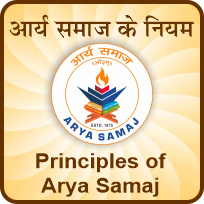



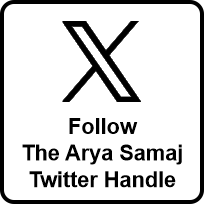



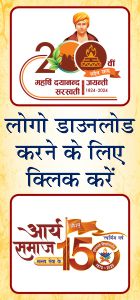
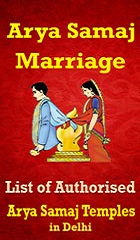
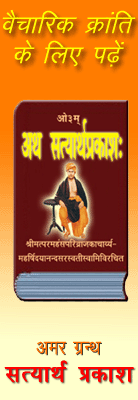


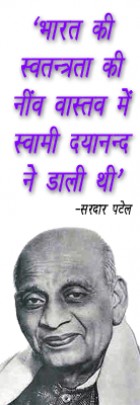
ALL COMMENTS (0)